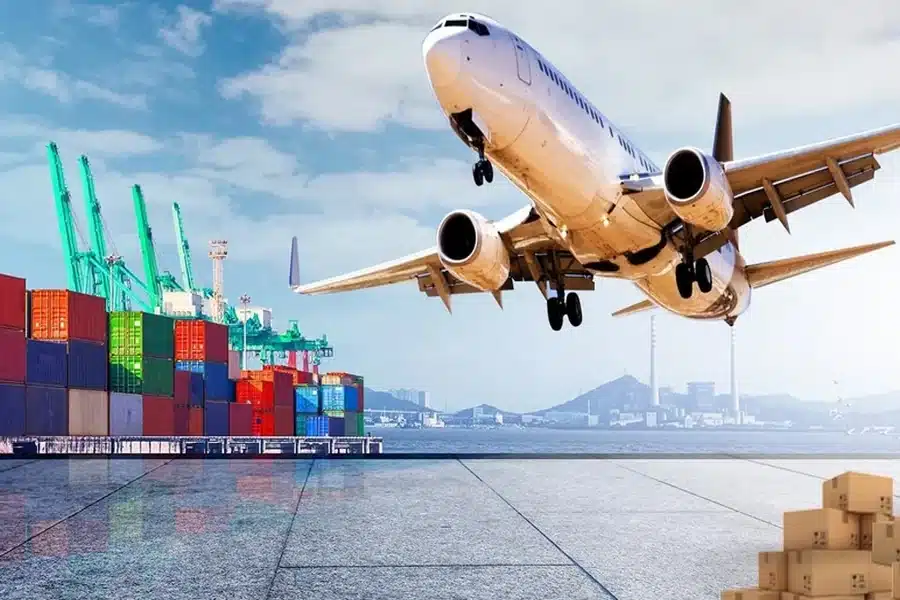Goods on the Move: The Export Journey You Don’t See

Every day, thousands of goods quietly make their way from the UK to the United States. This is the story of how it all happens.
1. The Quiet World of UK to US Exports
When it comes to international trade, the spotlight is often on large figures and government deals. What rarely gets attention is the work that goes into shipping goods across borders. For UK exporters sending products to the United States, the journey is more complex than most people realise. Behind every exported pallet or container is a network of planning, transport and documentation. This quiet but essential part of trade is what keeps shelves stocked, supply chains running and businesses thriving. Exporting is not just about having something to sell. It is about knowing how to move it properly.
2. Getting Goods to Port: More Than Just a Lorry
The first step in the export process involves moving goods from your premises to the port. This is where container haulage comes into play. Depending on the size of the shipment, exporters might use a full container load (FCL), where one shipment takes up the whole container, or a less-than-container load (LCL), where several smaller shipments are consolidated. The haulage stage includes planning pick-up times, booking space at the port and ensuring that all the goods are securely packed and ready to go. UK ports like Southampton, Felixstowe and London Gateway are key points of departure, and getting goods there on time requires careful coordination. Missing a slot or delay in transport can have a knock-on effect across the entire shipment timeline.
3. Sea Freight to the USA: Reliable and Cost-Effective
Sea freight is the most widely used option for exporting goods from the UK to the United States. It is particularly suitable for large volumes of goods that are not urgently needed. The typical sea transit time ranges from 10 to 14 days, depending on the destination port and route taken. Exporters can choose between FCL and LCL based on their cargo size and budget. Sharing a container with other shipments in an LCL setup can significantly reduce costs, especially for small to medium-sized businesses. Sea freight also offers more stability in pricing compared to air freight, making it ideal for planned, routine shipments. Most containers heading to the US arrive at major ports like New York, Houston or Los Angeles, from where they continue their journey inland.
4. Customs Clearance: The Paperwork You Cannot Skip
However well your goods are packed and sent, documents must accompany the shipment. Exports require customs clearance (prior to dispatch) before being released. Before exporting anything, exporters should ensure to have accurate export declarations, commercial invoices, packing lists and correct commodity codes. They are all important for getting the shipment accepted at customs. A lack of attention to details can result in hold-ups, delays and fees. A number of organizations rely on freight forwarders to interact with customs agents to ensure things go smoothly. Though the steps are the same each year, following them is necessary for clarification of legal matters and for no disruptions in the supply. Calling on experts at the customs office can reduce the stress on the exporter and help everything proceed in a more efficient way.
5. Final Steps: From the US Port to the Customer
Once they get to the United States, the goods must be delivered to the final customer. For the last part, more people need to cooperate. When the shipment is at a US port, it has to go through US customs. Goods will normally be taken by truck to their intended destination for international shipments. Being able to use a partner with door-to-door service is a big help for many UK exporters. The same business takes care of pick-up in the UK and delivery to the US. This cuts down on the time passengers have to wait, reduces mistakes and means they only need one transport provider. When you export regularly, having one company take care of everything can be very convenient.
6. Shipping That Just Works
The best export logistics is the kind that happens without you having to worry. If all the steps are taken well, goods get where they should be and at the right time without issues. Because of it, exporters have peace of mind and can concentrate on their business, their customers and exploring new areas to sell their goods. What you never see is the important role of organisation in freight processes. No matter if something is shipped by container, on a ship or takes place at the customs office, each element is important. It is not overly exciting, yet it is very important. That’s the reason it should be given extra attention.
